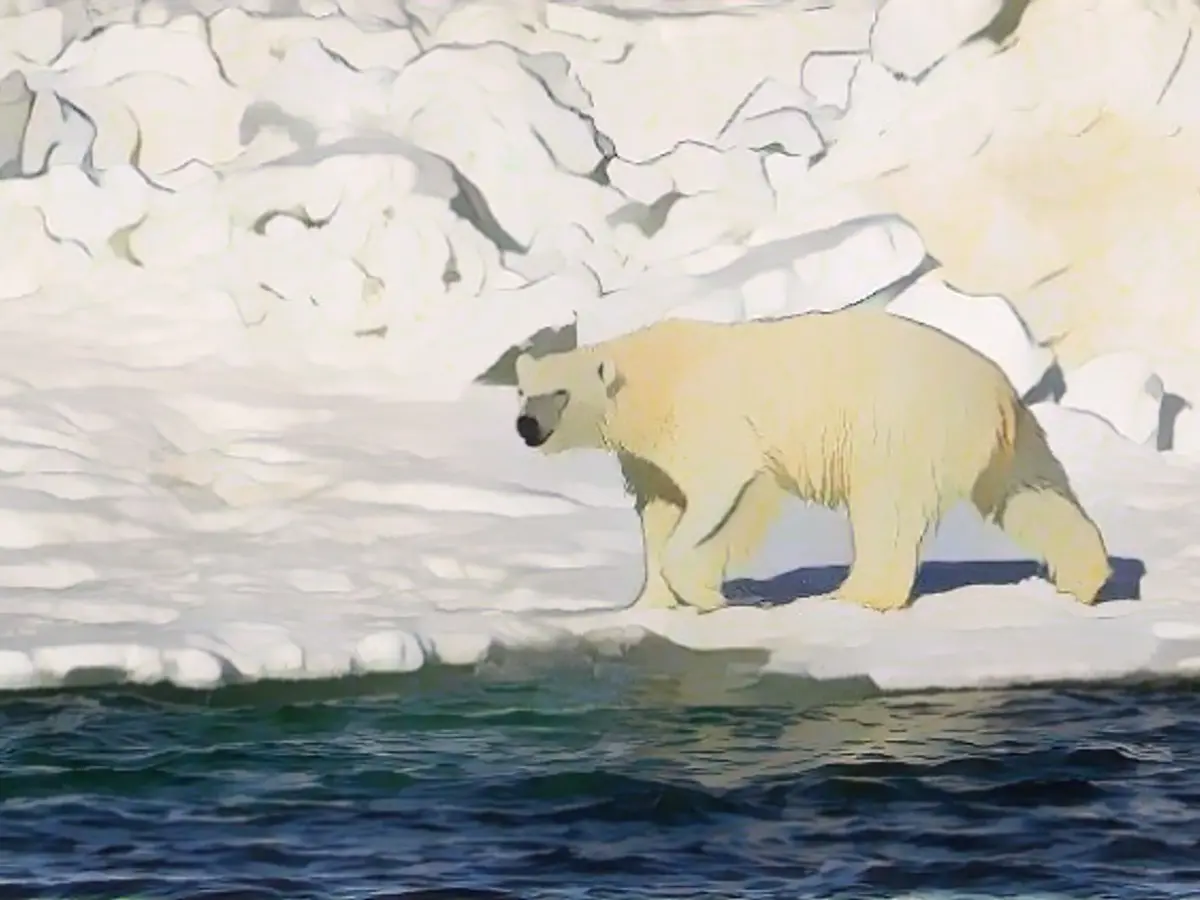Bird flu kills polar bears for the first time
It is highly contagious, reaches the most remote areas of the world - and no longer just kills birds: bird flu is becoming dangerous for more and more mammals. Scientists have reported the first death among polar bears in Alaska. They fear a "major ecological catastrophe".
Bird flu is spreading further and further - and is reaching even the most remote regions of the world. The latest victim of the highly contagious H5N1 virus: a polar bear. According to the Alaska Department of Environmental Conservation, it was found near Utqiagvik, one of the northernmost communities in Alaska. "This is the first reported polar bear case ever," Dr. Bob Gerlach, Alaska's state veterinarian, told the Alaska Beacon. The bear had probably feasted on the carcasses of infected birds.
The current outbreak of the highly infectious H5N1 variant, which began in 2021, is estimated to have killed millions of wild birds. Thousands of mammals worldwide have also died from the virus, including black and brown bears. Bald eagles, foxes and kittiwakes are among the species that have died from the virus in Alaska in recent months.
The virus "has been detected in mammals in the Antarctic and now in the high Arctic - it's horrifying," Diana Bell, emeritus professor of conservation biology at the University of East Anglia, told the Guardian. "And yet I'm not surprised - in the last few years the list of mammals killed has become enormous." The disease has now killed so many predators and scavengers that it is no longer just a poultry disease. "We already have a pandemic in biodiversity."
"Greatest ecological disaster of modern times"
The first known cases of H5N1 were detected in Antarctica in October in the bird species Subantarktikskua on Bird Island off South Georgia. Two months later, hundreds of dead elephant seals were discovered. According to scientists, fur seals and sea gulls are also increasingly dying. Researchers warn that the highly contagious virus could trigger "one of the greatest ecological disasters of modern times" if it reaches the remote penguin populations.
The ecosystems in the polar regions are particularly vulnerable to bird flu as they are home to many animals that are found nowhere else in the world and have never come into contact with similar viruses. They are also among the regions most affected by climate change.
Polar bears are listed as "vulnerable" on the Red List of the International Union for Conservation of Nature (IUCN), which is mainly due to the loss of sea ice. It's possible that more bears have already died unnoticed, as they tend to live in remote places with few people, says Alaska's state veterinarian Gerlach. "You really have to rely on the public being out there or the wildlife biologists doing the monitoring."
Read also:
- This will change in December
- Fireworks and parties ring in 2024 - turn of the year overshadowed by conflicts
- Attacks on ships in the Red Sea: shipping companies avoid important trade route
- Houthi rebels want to launch further attacks despite international coalition
The virus linked to bird flu, H5N1, has been detected in animals beyond the avian world, reaching even the remote Antarctic and Arctic regions. This raises concerns, as polar bears in Alaska were recently found to have been infected, potentially leading to a major ecological impact.
Climate change, which significantly affects polar regions, makes these ecosystems more vulnerable. The Arctic is home to numerous unique animals, many of which have not encountered similar viruses before.
Mammals, including polar bears, have lost lives due to the bird flu, with experts fearing an outbreak amongst Antarctica's remote penguin populations, which could lead to one of the "greatest ecological disasters of modern times."
Source: www.ntv.de







